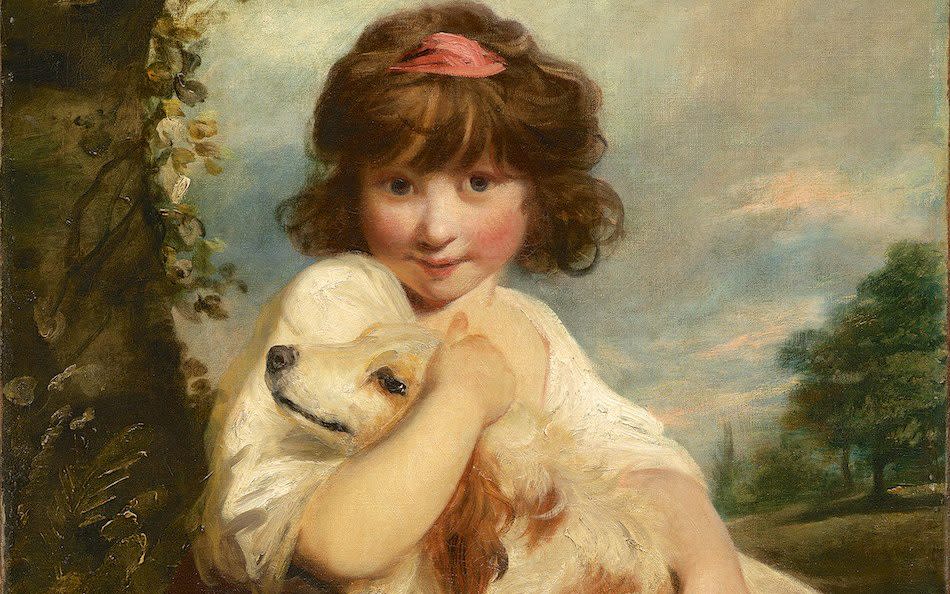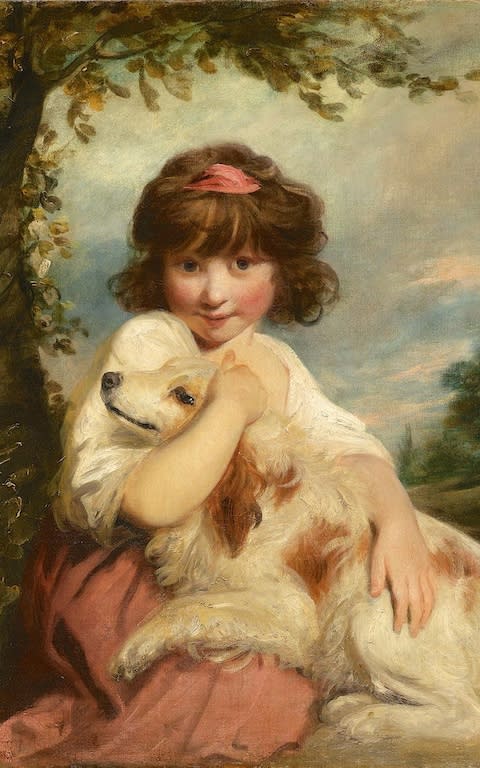Japanese museum demands compensation before it will return stolen £1m painting to family of British Baronet

A Japanese museum is refusing to return a £1 million Joshua Reynolds painting stolen from a Sussex home in 1984 unless it receives “just and reasonable compensation”.
The oil-on-canvas portrait was painted in about 1780 but stolen from the home of Sir Henry and Lady Price with a number of other works of art and family heirlooms.
Four years after the theft, the painting is thought to have been auctioned at Sotheby’s in London to an art dealer, who sold it to the Tokyo Fuji Art Museum in 1990.
The family of the late Sir Henry - a businessman from Yorkshire who founded Fifty Shilling Tailors stores in 1905 and later became a well-known philanthropist - engaged Art Recovery International to locate the painting and it was subsequently found in Tokyo.
But officials of the museum have refused to meet with the original owners of the painting and demanded payment of “a reasonable sum” before even engaging in discussions over the stolen work, a demand that is a contravention of ICOM guidelines.
Akira Gokita, director of the museum, did not respond to a request from The Telegraph for a comment, but the Tokyo law firm representing the gallery confirmed that the museum would be seeking a pay out.
But Haruhiko Ogawa, of the Kumada & Ogawa law firm, also denied that the painting was the same as the one stolen.
He said: “Even admitting that the painting purchased by the museum is the same painting that was stolen, compliance with the relevant international standards would require that a just and reasonable compensation should be granted to the possessor in good faith who returns stolen objects”.

The museum has been involved in a similar case previously, returning an oil painting attributed to Leonardo da Vinci to Italy in 2012, more than 70 years after it had been looted during World War II.
The Tokyo museum claimed it bought the work in good faith in 1992 but agreed to hand it over when the Italian government demanded that it be returned. Tim Radley-Smith, Lady Price’s grandson, told The Telegraph that it is “puzzling” how the painting got to Japan.
“My grandmother requested that my brother and I try and track it down before she died in 1993”, he said. “She got quite sentimental one day and said it would be wonderful if someone could try and find it”.
The work is an oil-on-canvas portrait of Miss Mathew, later Lady Elizabeth Mathew, with her dog before a landscape.
Christopher Marinello, a lawyer and CEO of Venice-based Art Recovery International, contacted the museum in 2015 to inform senior officials that the painting had been reported as stolen and was being claimed by the heirs.
The painting was not insured and the family therefore retains the title under British law. Mr Marinello said the museum initially denied that the painting was the same one that had been stolen in England.
The museum has since been presented with documentation to prove that the painting was the missing artwork, however, including the original receipt for the portrait from 1942 and a picture of it hanging in the family home, which museum officials have refused to accept.
Mr Marinello said the museum has also claimed “that they acquired the portrait in good faith under Japanese law” and he alleges they have since sought to frustrate the owners’ attempts to reclaim the work.
Mr Marinello is contesting the museum’s claim, pointing out that it failed to carry out independent due diligence before acquiring the work, as the institution is required to do as a member of The International Council of Museums.
Frustrated at what he claims was a refusal on the part of the museum to discuss the issue, Mr Marinello contacted ICOM to ask for the organisation’s assistance, but has been disappointed at the response. He alleges that ICOM described Art Recovery International as “bullies” for representing the victims of the theft.
“We are seeing an unpleasant and unfortunate trend among museums worldwide who have historically been reluctant to examine and publish the provenance of the objects in their collections”, he said. “Recently, museums have been digging in their heels and choosing to litigate against claimants over stolen and looted works of art.
“ICOM excels at having parties and social events and pontificating on what the museum community must do”, he told The Telegraph.
“However, when confronted with a real live stolen art case involving one of their members, they are nowhere to be found”.
In a statement, ICOM said the organisation "continues to encourage the parties to find a mutually acceptable solution, in a constructive and professional manner". The organisation is presently holding its annual conference in Kyoto.
Typically, in cases in which people with a historical claim to a work of art, legal representatives approach a museum and provide provenance to support that claim.
Once provenance is confirmed, the two sides can discuss how the institution obtained the piece and how the issue can be resolved. That varies from case to case, but usually items are returned to the original owner or they choose to accept a monetary resolution instead.
“It was my grandmother’s favourite picture”, said Mr Radley-Smith. “We had it for a long time and we have spent a long time trying to get it back. “It means a lot to our family”, he added. “It is not just financial. A lot of Reynolds portraits are quite stuffy, but this is quite an unusual one because it’s impressionist.
“The fact that she loved it so much means a lot to me”, he said. “It’s not as if we had an insurance pay out, so why shouldn’t we try and get it back? It was stolen from us. I think anyone would try and get things returned”.
A spokesperson for Sotheby's told the Telegraph: “We have had no contact from Art Recovery International, or anyone else, regarding this so we have no evidence to suggest that there is any truth in it. We welcome any further information the relevant parties can provide."

